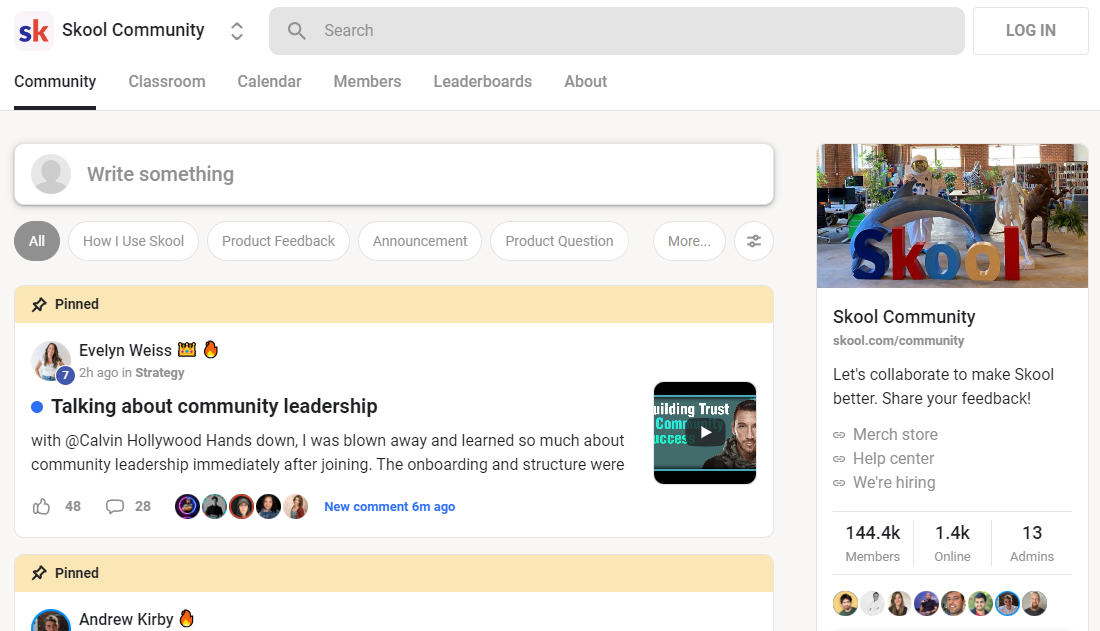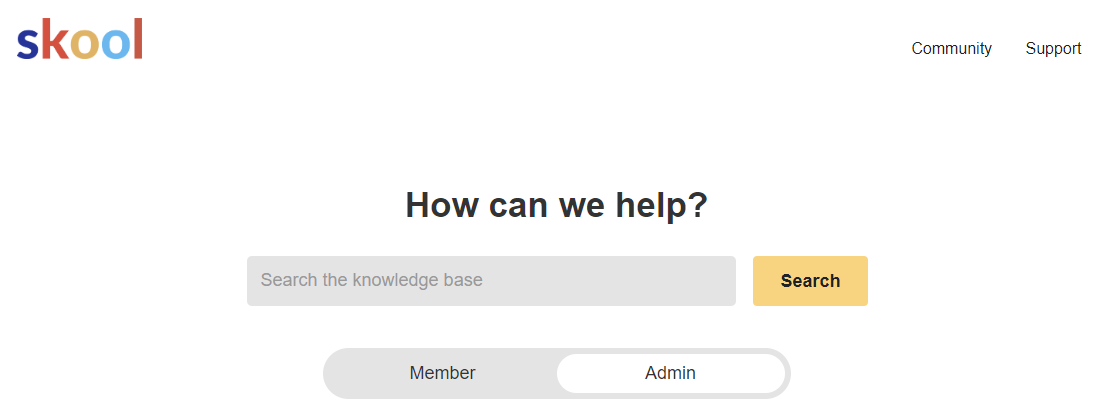Skool offers best-in-class gamification attributes that improve involvement. For instance, members can gain degrees based on their engagement, which open course content and other incentives that further inspire them.
Formerly, designers needed to utilize different devices for organizing programs, building communities and managing email advertising. This created a disjointed experience for both makers and their audiences.
Creating Courses
Skool has an easy, straightforward interface and prioritizes community building and training course holding over various other features. It permits developers to produce a dynamic community for their training courses and coaching programs by connecting them with the best target market. This additionally helps them monitor the health and wellness of their web content business with the help of a basic dashboard.

To begin, an individual can enroll in a totally free 14-day trial of Skool. Afterwards, they can pay $99 a month for the platform to host a solitary community. There are no other rates options available for the moment. Skool also processes payment and pays designers weekly, yet it does charge a 2.9% deal cost.
One of the special elements of Skool is that it can be utilized to produce interactive programs. These can consist of online webinars, team tasks and real-time discussions. These kinds of training courses urge participation and boost program conclusion rates. On top of that, Skool’s gamification features help to motivate area participation. For instance, participants can gain factors and unlock training course web content when they reach particular levels in the area.
Users can likewise use the social prey on Skool to upload updates and interact with others in the neighborhood. The feed appears like a Facebook team, yet with a more controlled method of posting. This helps to prevent the sort of spam and misuse that happens on other social platforms.
Managing Communities
Skool is a really simple system to use, for both members and admins. Its simplicity is one of its main selling factors– when a person joins your area they won’t be confronted with a bunch of alternatives or functions that can thwart their experience and perplex them.
The system starts off as a personal team by default, yet you can conveniently transform this to open up your community to any individual that you wish to become part of it. When you’ve done this you’ll see a social feed like you would certainly on Facebook Groups or WhatsApp (however without all the scam things and swearing).
You can also include a classroom tab to your community that you can use to share educational content with your participants. This function is especially beneficial for areas that are concentrated on discovering or expert growth as it aids to develop an instructional framework and makes it simple for participants to track their progression. Additionally, the system has gamification components that allow members to earn factors by liking articles or remarks. When they reach a particular degree they can open sources, such as programs, even more driving involvement.
The other cool point is that Skool has a mobile app, much like Mighty Networks or Slack, so members can keep up with your area and engage on the move. This is a wonderful means to motivate and engage your participants and to help them get support from each various other when they need it, instead of simply turning to you for answers.
Who Is Skool Community
Skool concentrates on gamification, allowing individuals to gain factors and badges for their contributions. This inspires members to engage with the community and contribute to discussions. Subsequently, this helps them level up and unlock benefits like videos and various other material. Admins can likewise establish training courses to be opened at particular levels to further drive engagement.

The Skool user interface is spick-and-span and user-friendly. Its main features include the Community tab, which looks just like a Facebook group feed. Right here, customers can post remarks and text in addition to upload pictures, web links and video clips. Members can also see each others profiles and connect with them. Moreover, customers can develop exclusive teams in the community to talk about particular subjects.
An additional feature of Skool is the Classroom tab, which resembles a YouTube livestream or Zoom meeting. Using this, managers can hold trainings and webinars for their trainees. They can likewise add occasions in the schedule to stay upgraded on upcoming events and Who Is Skool Community.
Nevertheless, some facets of Skool could use enhancement. For instance, the platform isn’t adaptable when it pertains to monetization as customers can not provide multiple pricing rates for their courses and neighborhood subscriptions. Moreover, the device does not have an e-mail advertising and marketing function, which might be a deal breaker for some training course makers. It also doesn’t have native video clip hosting, suggesting that customers need to utilize external systems like YouTube, Loom and Vimeo for their videos.
Including Content
The process for including content and communicating with members on Skool is simple and uncomplicated. Admins can create blog posts with text, GIFs, video clips and surveys. They can additionally include occasion schedules to alert neighborhood members of upcoming team Zoom calls or live streams. In addition, they can make use of Skool’s e-mail broadcast function to send out a message to the entire neighborhood with a solitary click. This removes the demand for labeling and listing segmentation, which can be difficult.
Moreover, Skool’s gamification features can increase interaction and user retention. It urges members to interact with the material often by rewarding them with different rewards. These include unlocking course content, earning factors and gaining an area on neighborhood leaderboards.
While Skool provides a host of valuable attributes for developing and providing online courses, it’s not for everybody. The system is best for trainers, experts and various other details entrepreneurs. Nevertheless, the cost can be an obstacle for some people seeking to monetize their on-line content.
Furthermore, the absence of fundamental tiers and a short free trial might be a deterrent for lots of. On top of that, the system’s laser-focus on eLearning can make it much less desirable for people that wish to offer other electronic products. Nevertheless, regardless of these disadvantages, Who Is Skool Community is still a feasible option for anyone seeking to produce and monetize on the internet programs.